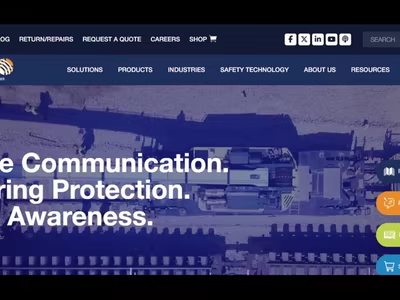TakeCare • Reinventing a digital filing cabinet for Health Plans
Redesigning Take Care Together in Figma involves a systematic approach to ensure that the new design is user-friendly, visually appealing, and aligned with the brand’s goals. Here's a step-by-step process for your Figma redesign project:
1. Project Planning & Discovery
Understand the Existing Website: Analyze the current site structure, user flows, and design elements. Identify areas that need improvement such as layout, user experience, and aesthetics.
Define Goals: Work with stakeholders to clarify the redesign’s goals (e.g., improving navigation, modernizing the design, optimizing for mobile, or enhancing content presentation).
Research & Benchmarking: Review competitor websites and gather design inspiration from other successful health or care-related platforms. Note current trends in web design, focusing on accessibility, usability, and clean aesthetics.
Create Personas: Understand the target audience of Take Care Together. Define user personas based on their needs, behavior, and motivations, so that the redesign aligns with their expectations.
2. Wireframing
Low-Fidelity Wireframes: Start with rough wireframes in Figma, outlining the basic layout for key pages (e.g., homepage, services, blog, contact). Focus on structure, without detailed visual elements, to define the overall flow of the website.
User Flow Mapping: Ensure the user journey is smooth by mapping how users will navigate between different sections of the site.
Feedback & Iteration: Share wireframes with stakeholders or team members for feedback. Iterate on the layout based on user experience, keeping accessibility and ease of navigation in mind.
3. Style Guide & Design System
Define Color Palette: Choose a color scheme that reflects the brand identity of Take Care Together. Keep accessibility in mind by ensuring color contrast meets WCAG standards.
Typography: Select fonts that are legible and professional. Consider using Google Fonts or other web-safe fonts for compatibility across devices.
UI Components: Create reusable components (buttons, forms, icons) in Figma, ensuring consistency across the site. Use Figma’s components and auto layout features to make the design scalable and easy to update.
Brand Identity Alignment: Ensure the overall look and feel align with the Take Care Together brand. Incorporate any existing branding elements (logos, color schemes) into the style guide.
4. High-Fidelity Design
Homepage Design: Start with the homepage, as it sets the tone for the rest of the website. Focus on creating a clean, modern design that clearly communicates the mission and services of Take Care Together.
Use large, high-quality images and concise text to highlight the main offerings.
Place clear CTAs (Call-to-Actions) that guide users to key pages like services, contact, or blog.
Inner Pages: Design the internal pages (e.g., About, Services, Blog) using the same design language. Focus on consistency with headers, buttons, and other UI elements.
Optimize content presentation for readability and accessibility.
Mobile Design: Create responsive versions of your designs in Figma. Ensure that the mobile experience is just as smooth as the desktop, with easy navigation, legible fonts, and optimized images for smaller screens.
Use Figma’s constraints feature to ensure designs adapt well to different screen sizes.
5. Prototyping
Interactive Prototype: In Figma, use the Prototype tab to link different pages together and simulate the user experience. Add interactive elements like hover states, dropdowns, and clickable buttons.
Test User Flow: Navigate through the prototype to ensure all user journeys are smooth and intuitive. Test different paths such as browsing services, submitting a contact form, or reading a blog post.
Usability Testing: Conduct basic usability testing with key stakeholders or real users. Gather feedback on navigation, ease of use, and design elements.

6. Collaboration & Feedback
Present to Client: Share the high-fidelity designs and prototype with the client for feedback. Use Figma’s collaboration features (comments, shared links) to gather input directly within the design file.
Iterate Based on Feedback: Make necessary adjustments based on feedback. This include refining certain layouts, adjusting CTAs, or improving visual hierarchy.
Like this project
Posted Feb 11, 2025
Redesigned the TakeCare website to improve the UX, creating a more intuitive and friendly experience for users in case of emergency and end of life plans.
Likes
1
Views
8







